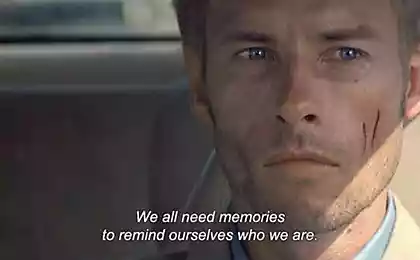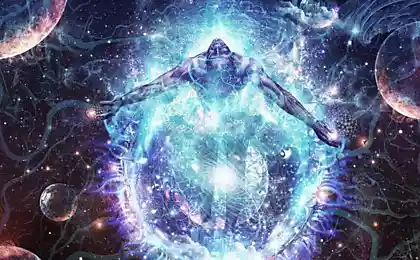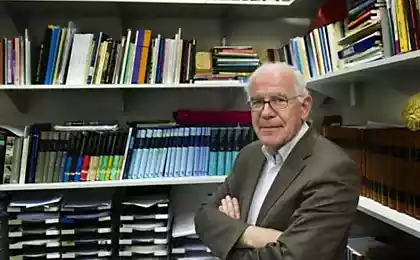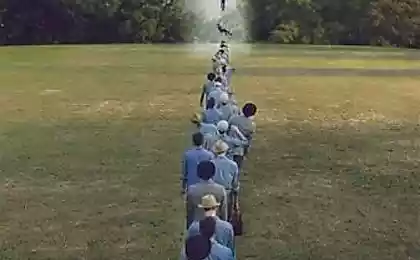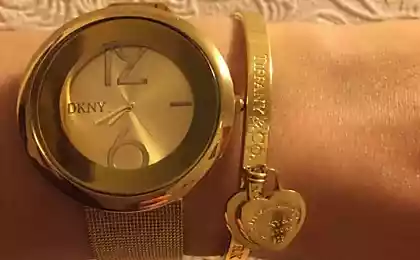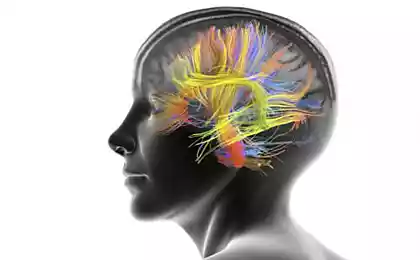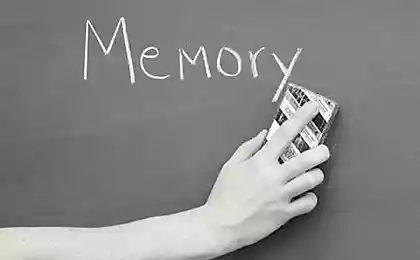589
The trigger for the mind? 25-year-old boy was taken out of the coma, focusing ultrasound on a small area in the center of the brain

The protagonist of the film "Remember" also suffered from damage to the thalamus
A group of scientists from the University of California in Los Angeles has published a report on the first case in the history of medicine, patient withdrawal from the coma non-invasive methods. The patient was able to bring to consciousness, affecting pulses of ultrasound on a small area of the brain called the thalamus
While this is an isolated incident. Return of consciousness to the patient may be a coincidence or an accident. It may be due to its young age. Scientists are now preparing a large-scale clinical trials of the device.
If the theory receives confirmation, the experimental ultrasonic generator may be approved for use by all medical institutions. It can be deduced from a vegetative state and waking coma tens of thousands of people. At the same time scientists a little closer to understanding the phenomenon of consciousness - the fundamental way in which people relate to the world
. The experimental results can be an accident. But scientists have long been exploring this area of the brain, and have been previously obtained evidence that the thalamus is related to consciousness.
In 2007 we produced the first such operation with influence on the thalamus. 38-year-old patient, who was in a waking coma (minimally conscious state), was able to return a partial functionality when working electrodes on the thalamus six years [1]. Lead researcher, who conducted the operation, according to ultrasound exposure perspective: "This is an intriguing and interesting opportunity," - said Dr. Nicholas Schiff (Nicholas Schiff), a neuroscientist at the Biomedical Research Centre Weill Cornell Medicine at Cornell University (USA)
Thalamus - the brain region responsible for the redistribution of information from the senses, with the exception of smell, to the cerebral cortex. Once the information about any sensation entered the thalamic nucleus, where it occurs the primary treatment. In the thalamus there are four main core: a group of neurons redistributed visual information; core redistributive auditory information; core redistributive tactile information and core redistributive sense of equilibrium and balance. Located in the central part of the brain.
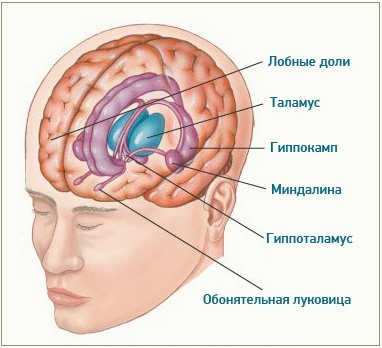
limbic system
Damage to the thalamus can lead to sleep disturbances, involuntary trembling of the hands in the conscious state, as well as anterograde amnesia when the patient remembers all the events before the injury, but nothing more can not remember. From the thalamus damage suffered protagonist of the famous film "Remember» (Memento) Christopher Nolan - one of the best films in cinema history
. It is clear that the thalamus is associated with the formation of memories. But is the presence of memory and memories associated with the presence of consciousness? Perhaps connected directly.
In the first story surgery noninvasive removal of a person from a coma, scientists from the University of California used an experimental device, like a saucer with a diameter 71, 5 mm, in plastic case, filled with deionized water and degassed sealed thin plastic membrane, transparent to ultrasound. The transmitter focuses the ultrasound radiation at a frequency of 650 kHz exactly in the central region of the brain where the thalamus is located. Specifically, the transmitter used BXPulsar 1001 manufactured by Brainsonix Inc.

Experimental device for ultrasonic stimulation of the thalamus. Image: Martin M. Monti / University of California, Los Angeles
As it turned out, the method of focused ultrasound pulsation of low intensity (low intensity focused ultrasound pulsation (LIFUP)), is able to noninvasively influence the region deep within the brain, without affecting the neighboring departments. This technique has been tested before in humans and animals - and proved to be great from a security point of view [2] [3]. Earlier LIFUP effect on the thalamus of laboratory mice has helped speed up the return of the functionality of the brain after injury [3]. Those results were the basis for the first experiment on humans.
For the first LIFUP clinical experiment in human history (NCT02522429 in the database of clinical trials), 25-year-old patient has been selected, which is in a coma for 14 days after the receipt of a traumatic brain injury in a traffic accident.
The performed computed tomography revealed he bifrontalnye injuries of the brain and subdural hematoma (bleeding between the firm and the arachnoid mater). During the experiment, the patient continued to impose the same sedatives before.
During the procedure LIFUP fed with pulses of 100 Hz repetition (100 times per second), the duration of each pulse 0, 5 ms. A total of 10 ultrasonic impacts was performed derated spatial-temporal intensity of 720 mW / cm2, each lasting 30 seconds, at intervals between them for 30 seconds. The procedure was controlled by a powerful 3 Tesla MRI scanner (Magnetom Tim Trio Siemens production), established in medical research center of the University of California in Los Angeles.

ultrasonic neuromodulation device BXPulsar production company Brainsonix Inc. Photo: Brainsonix Inc.
Prior to the procedure, the patient within 14 days demonstrated the steady state of waking coma. Three days after the session, the patient demonstrated a thorough understanding of speech, sustained response to commands and stable communication "yes / no" nod of the head. Doctors diagnosed a way out of the state of waking coma. On the fifth day after LIFUP patient tried to walk.
A successful experiment on the removal of patients from coma will be a welcome escape for many people. The inventors have mentioned that this technology will help lift the huge emotional and financial burden to the relatives of patients, reduce the burden on health infrastructure and the national budget. Now patients years of support in a coma, which is very expensive and also raises a number of difficult legal and ethical issues [4].
The study has great practical value, and gives food for thought about the nature of consciousness. This debate intensified in recent years after a clinical case of a very interesting patient has been described in the scientific literature. For many years he lived a normal and healthy life without even knowing that it lacks 90% of the brain. The man measured the intelligence that was below average: IQ of 75, but this did not prevent him from working civil servants, married and have two children
.

Magnetic resonance tomography of a patient with a brain virtually absent, but leading a normal social life. Photo: Feuillet et al./The Lancet
Prior to this case, scientists have assumed that the mind may be due to a variety of specific areas of the brain, such as klaustrum (enclosure) - thin (about 2 mm) irregular plate, consisting of gray matter and located under the bark of the cerebral hemispheres in the depths of the white matter . Another group of researchers from Princeton University put forward the theory that consciousness is related to the visual cortex. But the history of the French patient put under the big doubt, both these theories.
There were even new theories, such as "provision for the radical plasticity" of the brain. This theory postulates the existence of consciousness means that a person has not only information, but also aware of the fact that he has information. The brain continuously and unconsciously learns again to describe their own activity itself, and these reports are "self-diagnosis" forms the basis of conscious experience. It turns out that the presence of memory is critical for the presence of consciousness.
Now, new evidence that the nature of consciousness associated with the work of the thalamus and the nature of memory.
In the end, as the protagonist of Memento, we all need memories to remind us who we are.
Report doctors from the University of California in Los Angeles, published August 24, 2016 in the journal Journal of Brain Stimulation
(Doi: 10.1016 / j.brs.2016.07.008, pdf).
References [1] Schiff ND, Giacino JT, Kalmar K, Victor JD, Baker K, Gerber M, Fritz B, Eisenberg B, O'connor J, Kobylarz EJ, Farris S. Behavioural improvements with thalamic stimulation after severe traumatic brain injury. Nature 2007; 448 (7153): 600-3. Back to article
[2] Yoo SS, Kim H, Min BK, Franck SP. Transcranial focused ultrasound to the thalamus alters anesthesia time in rats. Neuroreport 2011; 22 (15): 783. Back to article
[3] Bystritsky A, Korb AS, Douglas PK, Cohen MS, Melega WP, Mulgaonkar AP, DeSalles A, Min BK, Yoo SS. A review of low-intensity focused ultrasound pulsation. Brain stimul 2011; 4 (3): 125-36. Back to article
[4] Monti MM, Sannita WG. Brain Function and Responsiveness in Disorders of Consciousness. Springer International Publishing: Switzerland; 2016. Back to article
Source: geektimes.ru/post/279850/
The world is so confused, unscrewed and simple
Physics in the animal world: the bombardier beetle and his "weapon"
